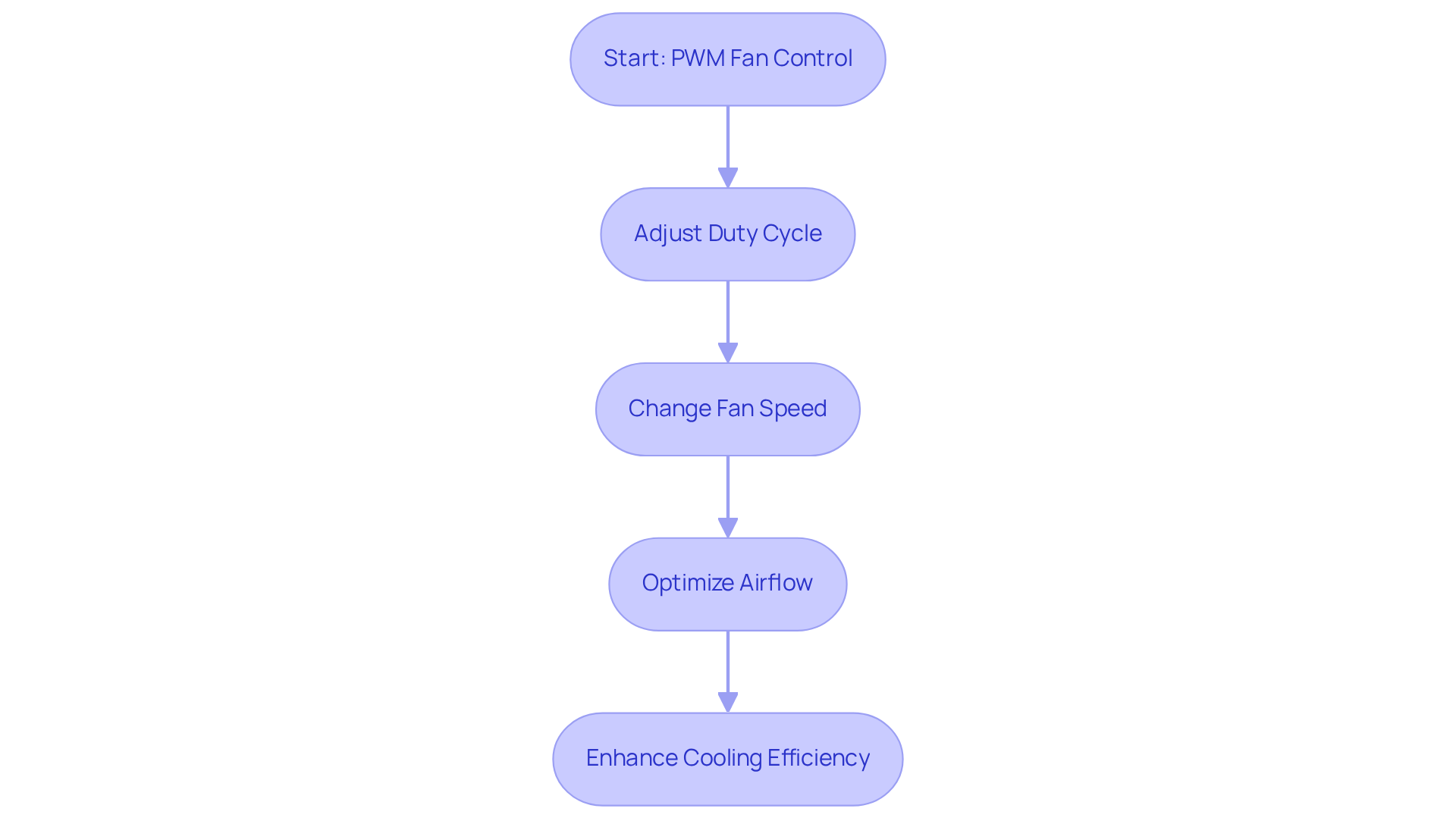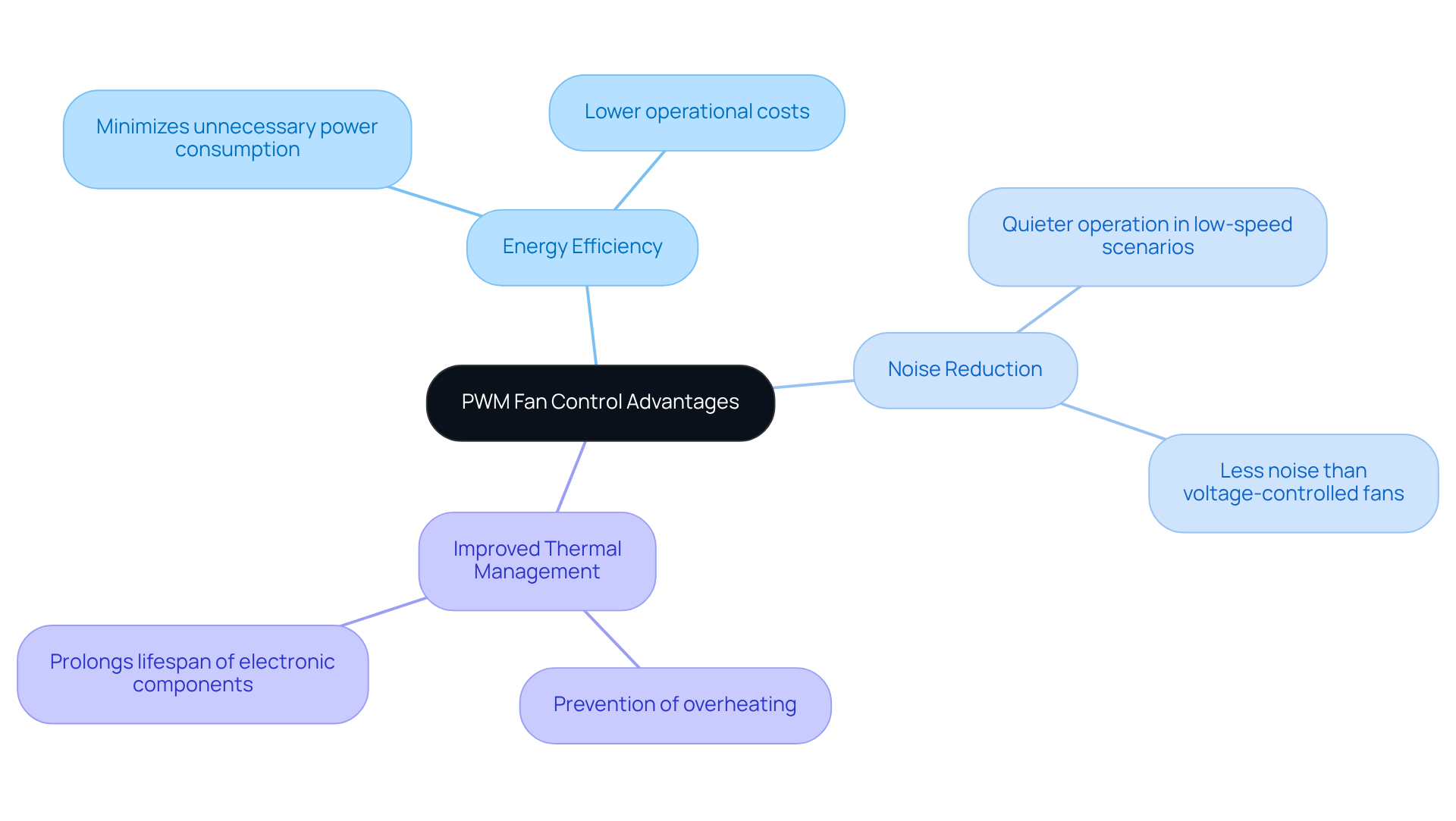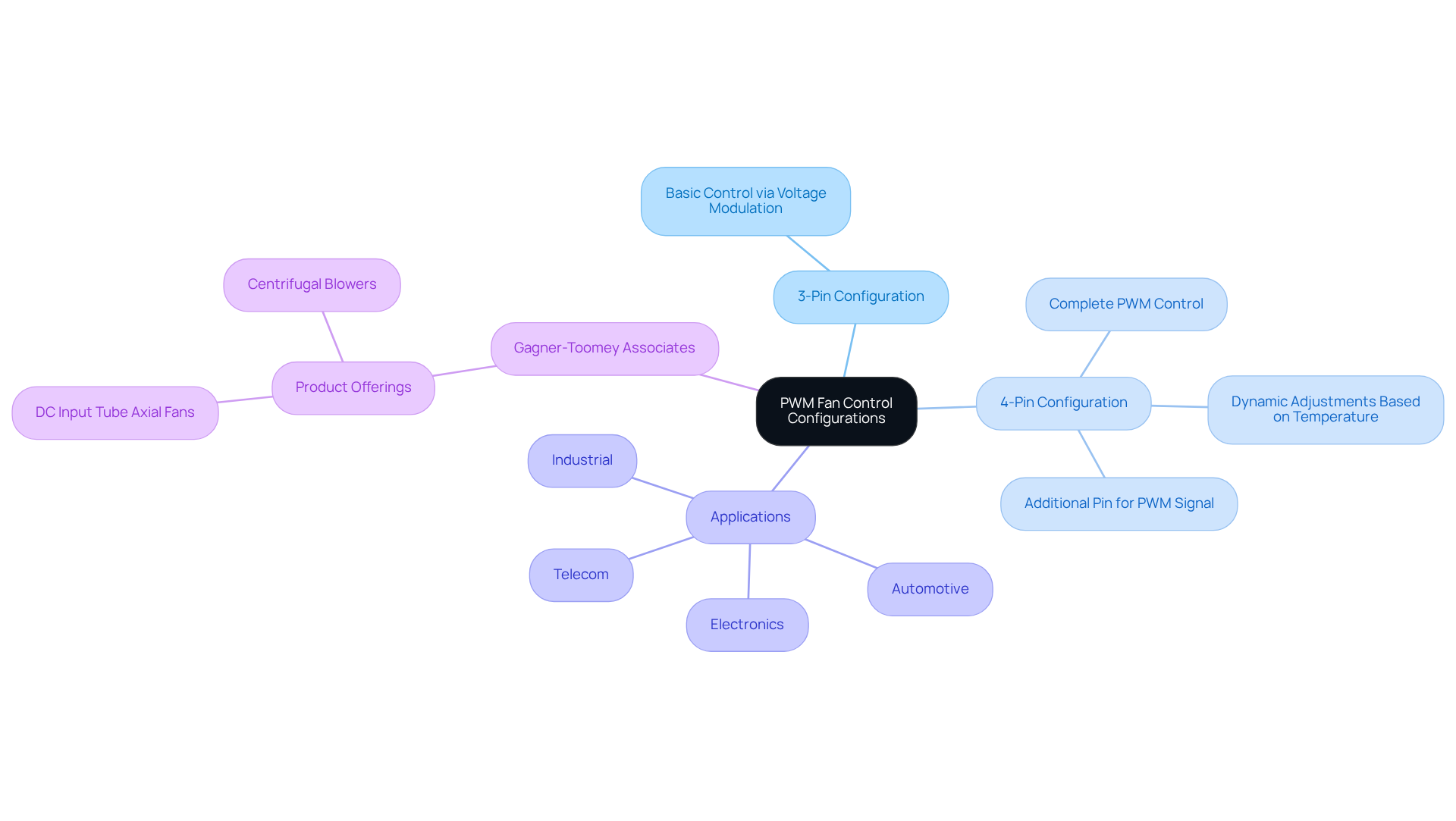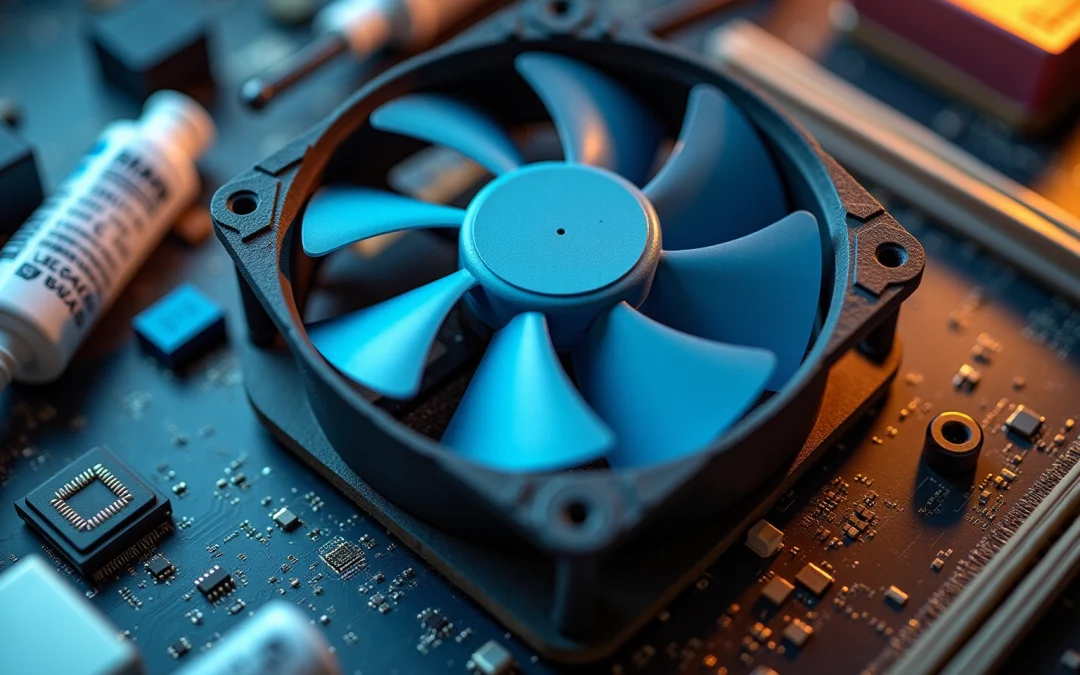Overview
PWM fan control serves as a pivotal method for regulating fan speed in electronic systems by adjusting the width of the electrical pulses supplied to the fan motor. This approach allows for precise control tailored to thermal requirements. The technique significantly enhances energy efficiency, reduces noise, and improves thermal management. Such benefits are particularly crucial in applications where optimal cooling is essential, establishing PWM fan control as a vital solution for effective thermal regulation.
Introduction
Understanding the intricacies of PWM fan control is essential for unlocking a realm of efficiency and performance in thermal management. This advanced technique not only optimizes fan speeds based on real-time cooling requirements but also significantly minimizes energy consumption and noise levels. As technology continues to evolve, navigating the various configurations and benefits of PWM fan control becomes crucial for ensuring optimal performance in electronic systems. By mastering this technique, one can achieve a harmonious balance between effective cooling and energy efficiency.
Define PWM Fan Control: Principles and Functionality
What is PWM fan control? It is a sophisticated method utilized to regulate the speed of fans in electronic systems by modifying the width of the electrical pulses supplied to the fan motor. This technique illustrates what is PWM fan control, as it enables precise control over the fan’s operation to adapt to the varying thermal requirements of the system.
What is PWM fan control? It involves adjusting the duty cycle of the PWM signal, which is defined as the ratio of the ‘on’ time to the total cycle time, allowing the fan to operate at different speeds and thereby optimizing airflow and enhancing cooling efficiency. Such an approach proves particularly advantageous in scenarios where effective thermal management is paramount, including applications in computers, HVAC systems, and a range of electronic devices.

Explore Advantages of PWM Fan Control: Efficiency and Performance
Understanding what is PWM fan control reveals significant advantages over traditional fan control methods. Primarily, understanding what is PWM fan control enhances energy efficiency; by adjusting the fan speed according to cooling requirements, it minimizes unnecessary power consumption, leading to lower operational costs. Furthermore, understanding what is PWM fan control reveals that PWM fans typically generate less noise than their voltage-controlled counterparts, as they can function at reduced speeds when full cooling capacity is not necessary. This capability fosters a quieter environment, which is crucial in settings such as home theaters or office spaces. Additionally, understanding what is PWM fan control enables precise regulation that improves thermal management, prolonging the lifespan of electronic components by preventing overheating.

Analyze Technical Aspects: Variations and Configurations of PWM Control
PWM fan management can be implemented in various configurations, including 3-pin and 4-pin fan connectors. The 3-pin arrangement generally permits basic control through voltage modulation, while the 4-pin setup facilitates complete PWM control, allowing for more accurate adjustments. In a 4-pin setup, the additional pin carries the PWM signal, which can be modulated by the system’s fan controller based on temperature readings. Furthermore, PWM can be integrated with advanced thermal management systems that utilize feedback loops to dynamically adjust fan speeds in real-time, ensuring optimal cooling performance.
Gagner-Toomey Associates, recognized as the world’s largest manufacturer of standard and custom air-movers, offers an extensive product line of DC input tube axial fans ranging from 15 to 280mm and centrifugal blowers from 15 to 225mm, optimized for performance and efficiency. Most models also come with IP protection upon request. Understanding what is PWM fan control and these variations is crucial for engineers and designers when selecting the appropriate fan control method for their specific applications, particularly in light of Gagner-Toomey’s innovative cooling solutions tailored for electronics, automotive, telecom, and industrial applications.

Conclusion
PWM fan control stands as a sophisticated approach to regulating fan speeds in electronic systems, underscoring the critical need for precise thermal management. By modulating the width of electrical pulses delivered to the fan motor, PWM technology facilitates efficient airflow management tailored to the dynamic cooling requirements of devices, thereby optimizing performance and energy efficiency.
This article explores the fundamental principles of PWM fan control, showcasing its benefits over conventional fan management techniques. Noteworthy insights encompass:
- Reduced power consumption
- Diminished noise levels
- Enhanced thermal regulation
Furthermore, a detailed examination of PWM configurations, including 3-pin and 4-pin setups, offers a thorough understanding of how these systems can be customized for specific applications, ensuring peak cooling performance across diverse environments.
Acknowledging the importance of PWM fan control is vital for engineers and designers aiming to implement effective cooling solutions in their projects. Embracing this technology not only extends the lifespan of electronic components but also fosters the development of quieter and more energy-efficient systems. Adopting PWM fan control represents a significant advancement toward sustainable and high-performing electronic devices, positioning it as a crucial consideration in contemporary design and engineering practices.
Frequently Asked Questions
What is PWM fan control?
PWM fan control is a method used to regulate the speed of fans in electronic systems by modifying the width of the electrical pulses supplied to the fan motor, allowing for precise control over the fan’s operation based on the system’s thermal requirements.
How does PWM fan control work?
It works by adjusting the duty cycle of the PWM signal, which is the ratio of the ‘on’ time to the total cycle time. This adjustment enables the fan to operate at different speeds, optimizing airflow and enhancing cooling efficiency.
In what applications is PWM fan control particularly beneficial?
PWM fan control is particularly advantageous in applications where effective thermal management is crucial, such as in computers, HVAC systems, and various electronic devices.

